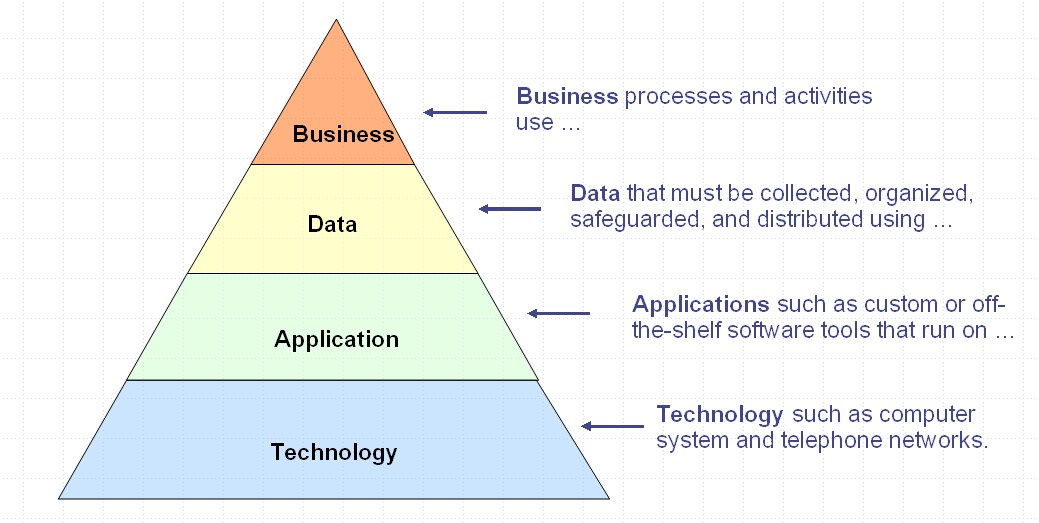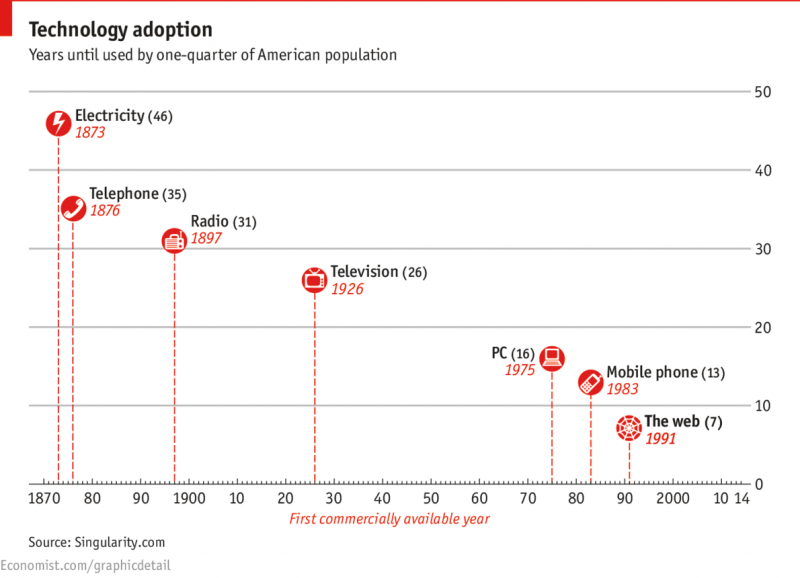Digital Disruption, Part 1
This semester (Fall 2017), once again, I will be blogging regarding my reading topics throughout the course. The class focus this time is specifically Enterprise Architecture: Information Technology Architecture.
As I detailed roughly a year ago, Enterprise Architecture (EA) itself can simplistically be considered the intersection of Business, Strategy and Technology. But if we look deeper into the overall concept of EA, we find that it can be easily broken down into smaller domains or layers. As detailed in this diagram created by Niles Hewlett from the USDA Enterprise Architect team back in 2006 (courtesy of Wikipedia), the 4 layers of EA are distinct, yet exist dependent on each other.

Throughout this course, we will dive deeper into each of the layers, exploring how they interact with each other and, more importantly, how different technologies and trends impact the overall architecture and each layer individually as well.
The Fast Pace of Technology Adoption
As we all know and experience frequently, technology is changing at an ever-increasing pace. Today’s hot trends can quickly become tomorrows old news. In considering this challenge, we need to be cognizant that this is two separate issues that compound each other. First, advances in technology itself are accelerating. As expounded in his book, The Singularity is Near, author Ray Kurzweil states, “Evolution (of technology) results in a better next-generation product. That product is thereby a more effective and capable method, and is used in developing the next stage of evolutionary progress. It’s a positive feedback loop” (Kurzweil, 2006). In other words, we are using better & faster tools to design and create better & faster tools. As the end product is improved, this then cuts down on the next stage of development, which in turn shortens the next development phase.
Secondly, adoption of said technology advances are accelerating as well. From end-user consumption of modern technology to the use of technology in business, the differences that we see compared to even 10 years ago is astounding and shocking. As noted by Rita Gunther McGrath, “It took decades for the telephone to reach 50% of households, beginning before 1900. it took five years or less for cellphones to accomplish the same penetration in 1990” (McGrath, 2013). The below chart was assembled by the Economist from data provided in Kurweil’s book. It shows not only the fast adoption of cellphones and the Internet, but other “new” technologies that have had a large impact on society over the past 150 years or so.
As society rapidly adopts technology, this quickly filters into the business world as well. An organization faces an even bigger challenge to be able to integrate the new technology into it’s business practices and strategy without bringing about major disruptions to the operation of the organization. More about that next….
References:
Kurzweil, Ray. (2006). The Singularity is Near: When Humans Transcend Biology. New York. Penguin Books.
McGrath, Rita Gunther. (2013). The Pace of Technology Adoption is Speeding Up. Harvard Business Review. Retrieved August 28, 2017 from https://hbr.org/2013/11/the-pace-of-technology-adoption-is-speeding-up

